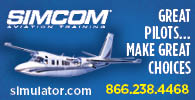National Flight Service’s Mike Bell has seen a few Honeywell TPE331 engines in his career. As the head of the turbine shop for one of the best Honeywell service centers in the country, Bell knows the TPE331 inside and out. He’s seen it all over the years, and as part of the company’s work overhauling and maintaining engines, certain patterns begin to emerge.
Bell said that the TPE331 is an incredibly reliable and durable engine, and that operators can do a few simple things to bring down their scheduled maintenance costs. He offered a few tips to help avoid problems on starts. “You’ll get away with a cheap hot section if you follow most of these rules.”
- Make sure the EPA kit is operating properly. This little canister on the side of the engine blows pneumatic air into the fuel nozzles to purge them of residual fuel when shutting the engine down. It’s what causes the momentary rise in engine rpm on shutdown. But if the EPA kit is not fully charged, it may not purge all the fuel from the lines and nozzles, and over time this can lead to coking or streaking of the nozzles. To avoid this, Bell advises that after a prolonged idle-power taxi, prior to shutting down you should advance the power slightly for 30 seconds to ensure the EPA cannister is fully charged
- Do basic fuel nozzle maintenance. Bell recommends having the fuel nozzles blow tested and flowed every 400 to 450 flight hours on Dash 10 engines and 400 hours on the Dash 5s. If you fly less than 100 hours a year, he recommends doing it yearly. “Fuel nozzle maintenance is the most important aspect of engine maintenance that an owner or operator can do,” he said. “A dirty or clogged fuel nozzle basically can become a blowtorch and can melt a lot of things.” This significant hot section damage can be avoided with basic maintenance.
- Pull the prop through before – and after – flying. In the previous story Bell recommended pulling the prop through as part of the preflight. He also stresses the importance of doing so as part of your post-flight procedures. Rotating the propeller on each engine for 30 seconds to a minute helps to move hot air out of the engine, helping to preserve the hot section. “It’s very important for cooling purposes,” he said.
Bell said the TPE331 engines on Twin Commanders are very durable and dependable. Operating them with a little care and attention will help ensure they continue to perform well, and it can help save you money.




